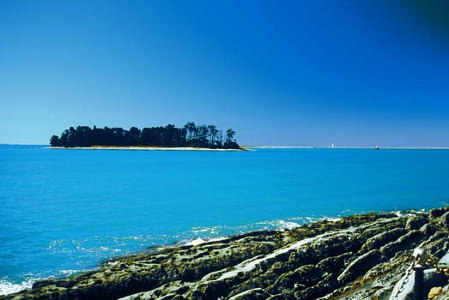The job I had was good and I would have been content to keep doing it, if it wasn’t for one thing. The hours were consuming my whole life.
Typically the working week would be up to 70 hours, or 14 hours per day, five days per week.
When you include two legally required half hour breaks into the day, that takes it up to 15 hours. Now add twenty minutes each way, to and from work, it’s 15:40 per day. Then add an hour to get out of bed, eat and get ready to go to work and it’s 16:40. Then add another hour to wind down after work, so you can get to sleep = 17:40. That leaves just six hours and twenty minutes per day for sleeping.
I would spend most of my days off sleeping, but still wouldn’t be recovered by the time I had to go back to work.
There was no time for anything but work and I needed something else. What I really wanted was a boat to play around in. Great idea, how do I go about it?
(And how do I get the spare time? To be answered later.)
I have long been of the opinion that there are two types of boat. Ones that you live on and ones that you take home at the end of the day. I now had to decide which was more suitable for me.
A dream is born!
The Dream
On the one hand a boat small enough to take home when finished sailing would sound like the most economically sensible choice. But on the socio-economic scale that isn’t necessarily the case.
With the small boat you need to have a trailer. That suddenly makes the boat quite a bit more expensive than the straight out boat price. You also need to have a vehicle capable of towing the boat. could be a bigger, more expensive vehicle than is needed for the rest of ones life style. You also need somewhere to park the boat when you get home, which means off street parking. So you are going to have to rent or buy a home with enough land to park the boat.
lets re-cap now. To have a small boat means that you also need:
Trailer
Vehicle
Property
Suddenly the small boat doesn’t look so cheap any more. Lets look at the other option, a boat big enough to live on.
That’s not a very cheap option at all, but lets look at it a little closer. You no longer need the trailer. Not much of a saving against the price of the boat. But then you wouldn’t need the big vehicle. So less capital tied up there and lower running costs, especially if you could get away with a much smaller car, scooter, bicycle or even walking.
The live aboard boat is still expensive, but a pretty sizeable discount has just been given when you take the trailer and vehicle costs into consideration. And think of the relaxed feeling that comes from listening to the water rippling against the hull, when you are going to sleep in a nice comfortable bunk at night. Oh yeah, you don’t need the cost of property any more either. Come to think about it, living expenses on a boat are a lot lower than living on land too.
Pros and Cons of a Liveaboard
So a liveaboard boat is starting to look promising, lets look at the pros and cons involved.
A suitable boat will allow travelling and living in ones own home to any coast or sea accessible water-way in the world, not just in your home country. No point going to the effort of a live aboard boat without factoring in this ability.
Firstly, what size are we looking at? The cost goes up exponentially for every extra foot of length. It must be remembered that a 40 foot boat scaled equally is not twice the size of a twenty foot boat, but actually eight times the size. Therefore the price difference is going to be corresponding, as will be the maintenance. For straight out living aboard, I think that 27-30 foot is a good size range to be comfortable. It’s not to big to handle, still affordable, capable of ocean cruising, not bad.
Hold on, there is a catch.
27-30 foot may be big enough to live on, but it is still pretty spartan. Can I really fit a shower on it? What about my music gear? Even if I could manage to store it, would I have the room to use it? I may not, in fact probably will not be the only person living on it and there is no point in restricting your-self to solo living. Given that there is not much variation required between a single person and a congenial couple to live aboard, this really should be factored in from the start.
Design Considerations
There are two opposing design limitations.
1: What is the largest boat you are prepared to look at?
2: What is the minimum interior space required for your lifestyle?
The absolute largest boat I would consider would be 35-36 feet long with a displacement of up to 8-10 metric ton and a maximum draft of about 5 feet. Anything bigger than that would not only be far to expensive in terms of purchase/building and maintenance, but would also be to big to handle comfortably without a bigger crew.
Next is the question of interior requirements and personally I have quite a few, for it to be worth my while of going to the trouble and expense of acquiring a liveaboard boat.
The basic list is in no particular order, a double berth, big galley (like the kitchen at home), shower seperate from the head compartment, dedicated nav station with full size chart table, workshop area, decent size saloon that can double as office space and accomodate music, video, photography, writing gear and library and protect it against the elements. It also still has to be ocean capable and have the storage space left over for all that that implies.
Now try and find a design which fits both of those limitations in one boat!
Not easy, but I did find one that fits the bill, designed by Tom MacNaughton and called Crown Jewel.
Crown Jewel
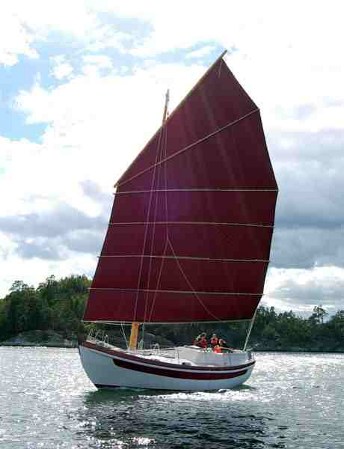 This is an example of a Crown Jewel built in Sweden, by Matti Palm and family. For design specs have a look at Tom MacNaughton’s site. As designed now, the accomodation will sleep up to seven people.
This is an example of a Crown Jewel built in Sweden, by Matti Palm and family. For design specs have a look at Tom MacNaughton’s site. As designed now, the accomodation will sleep up to seven people.

Tom will be re-designing the interior for me, to be optimized for two people. The interior will be completely different to what you see on his site now and will reflect all of my requirements.
Balancing Time & Income
So the dream is born, the boat is chosen, but there is still no time outside of work to do anything about it.
What is needed is some contemplation time, to solve the dilemma.
Fortunately spending large amounts of time changing gears, behind the wheel does give plenty of time for contemplation.
What exactly is the problem?
The skills are there to get employment. In this industry the hours are generally long. There are some jobs in this industry with shorter hours, but the hourly rate of pay seems to reduce with it.
Time to look for another town with more opportunity, that has the same or lower cost of living than where I am now. Also it has to be somewhere that I can handle living for an extended period of time.
Dunedin!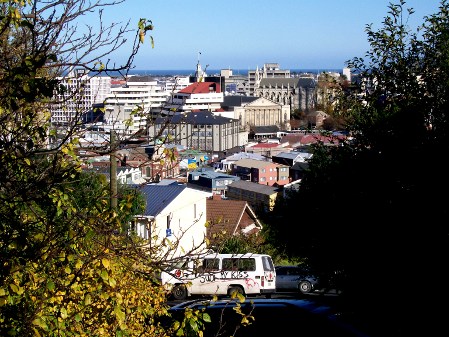
This is a small city in the south of the South Island. Home of the prestigious Otago University. Fully functional city that is small enough to get around by walking. Also home to a breeding colony of Royal Albatross. Sounds like just the place.
Dunedin Relocation
Arriving in Dunedin meant driving about ten hours a day. Certainly better than some of my previous driving hours. There were still a couple of problems here. First, the work day started at 2:30 AM, which meant getting out of bed at 1:30 AM. I have worked some strange hours in the past and indeed I kind of like working at unusual hours of the night, but this was definitely the hardest sleep pattern for me and I wasn’t able to adjust to it. It was also still around 50 hours per week, which doesn’t leave enough energy to do the other things that are important.
After a couple of months I started a job with a different transport company, working days. This was more of a managerial role, with only occassional driving and forklift operating. Better yet it was a day job. This job was usually between 50-60 hours per week, but being at a better time for allowing me to sleep was still a better option.
During this time I started looking for suitable planking timber for building Crown Jewel. The timber I settled on as the most suitable, here in New Zealand was Macrocarpa (Cupressus macrocarpa). Unfortunately the only way to get good usable, straight grained, knot free Macro is through selective milling. This is a long process that could well take up to two years to get enough timber, which then has to be left to season for a further year before using. (I now have about a quarter of what I require, and that may increase to half by the end of the year. So building will be able to be started in a little over a year from now.)
Given the amount of time expected before I could start working on my dream, I considered buying a smaller boat to live on in the mean time.
Kaea
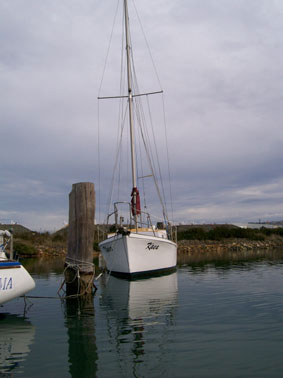 There are definitely compromises to be made when you get a boat, other than the one you ultimately want. Being smaller I will need to rent storage space for the stuff I cannot fit on this intermediate boat, but I can be living afloat sooner. Also I can use the time with it to try out some ideas for inside layout, for future use.
There are definitely compromises to be made when you get a boat, other than the one you ultimately want. Being smaller I will need to rent storage space for the stuff I cannot fit on this intermediate boat, but I can be living afloat sooner. Also I can use the time with it to try out some ideas for inside layout, for future use.
I looked at boats from all over the country, but finally settled on one that was already in Dunedin as being the best choice. That boat is Kaea as seen when first purchased. She is a 27’3″ 50/50 motor/sailor designed by Richard Hartley and is called a Hartley Tasman.
The boat will need interior renovating to convert from a family cruiser to a liveaboard suitable for a couple. Indeed, with the help of a qualified boat builder (whose work history included yachts, though was primarily with commercial fishing boats) I have completed most of this work, which has been done entirely while the boat is in the water. I intend on moving aboard by New Years day 08.
Apart from the fact that Kaea is a very good boat, one of the big selling points for me is the engine, which being in very good condition is exactly what I need for Crown Jewel.
Considerations For The Future
Until recently the plan was to move onto Kaea and rent a building, to build the ultimate boat in. On the face of it, this is quite an economical way of proceeding, however there are further considerations to take into account. In all reality it will probaby be about fifteen years before all of my boat building projects are completely finished and am ready to sail off into the sunset.
I would expect to spend an additional ten to fifteen years living and traveling on board after that, before I would envision wanting to settle down on dry land again. At that point I will most likely want to have my own house and/or peice of land.
After ten or fifteen years of living a lifestyle concerned more with fulfillment than building a nest-egg, buying property won’t be such an easy proposition. So, how does one achieve the boat building, cruising and liveaboard dream while having a piece of home to return to? Buy a small house now, with just enough land to build the boat on! The mortgage will be more than renting a building for the duration, but not exessively so, and by the time I leave I should not only own my own small house to return to, but should also be able to add a bit to the cruising kitty, through rental income from the house during the traveling stage of life.
Music
Because of the change in approach to building my Crown Jewel, I now find that I have some time to enjoy playing music again. My erratic work schedule precludes any organised playing with other people, so instead I have started recording music by myself. Below is a sample track, presented in HTML5. If you either cannot see the player, or it does not work. Then you are using a browser built with dark-age technology! I suggest you upgrade to a modern standards compliant browser, such as Firefox, Chrome, or Opera.
Over the Sea
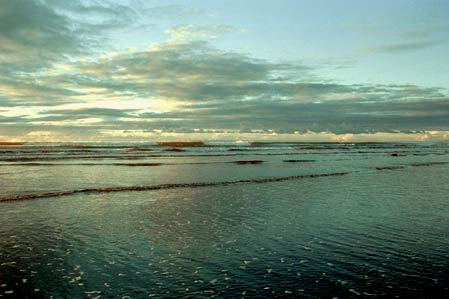
 In the first phase of life, starting from childhood through to early adulthood came with a number of experiences which shaped both my perception of life and interests that I will want to explore and experience for the rest of my life.
In the first phase of life, starting from childhood through to early adulthood came with a number of experiences which shaped both my perception of life and interests that I will want to explore and experience for the rest of my life.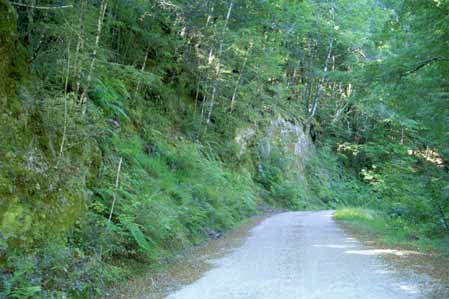 By the time I reached the mid twenties I was heading straight into a
By the time I reached the mid twenties I was heading straight into a  Settled into this nice little town I did two things. First I started teaching music part time at the local school, and at another one about an hours drive away. This allowed me to stretch my savings for a couple of years. The second thing I did, which was most important to me, was to contemplate life.
Settled into this nice little town I did two things. First I started teaching music part time at the local school, and at another one about an hours drive away. This allowed me to stretch my savings for a couple of years. The second thing I did, which was most important to me, was to contemplate life.
 During this time I was befriended by a former counselor who helped me see that I wasn’t necessarily functioning with the clarity that I was capable of, and that could be hindering my potential. Over many months and conversations, with much more time spent in contemplation, I began to find a different way to view life. I guess you could say that this was a watershed in my life.
During this time I was befriended by a former counselor who helped me see that I wasn’t necessarily functioning with the clarity that I was capable of, and that could be hindering my potential. Over many months and conversations, with much more time spent in contemplation, I began to find a different way to view life. I guess you could say that this was a watershed in my life. At this stage I had an unexpected knock at the door, with some part time work offered.
At this stage I had an unexpected knock at the door, with some part time work offered. 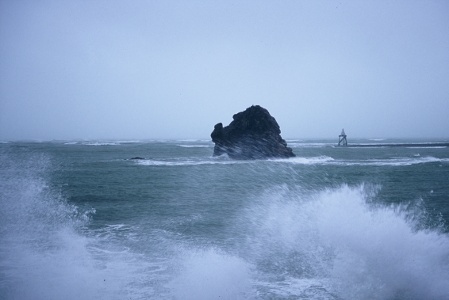 I found my first driving job at the top of the South Island, in a town called Nelson, famed for long sunshine hours.
I found my first driving job at the top of the South Island, in a town called Nelson, famed for long sunshine hours. 